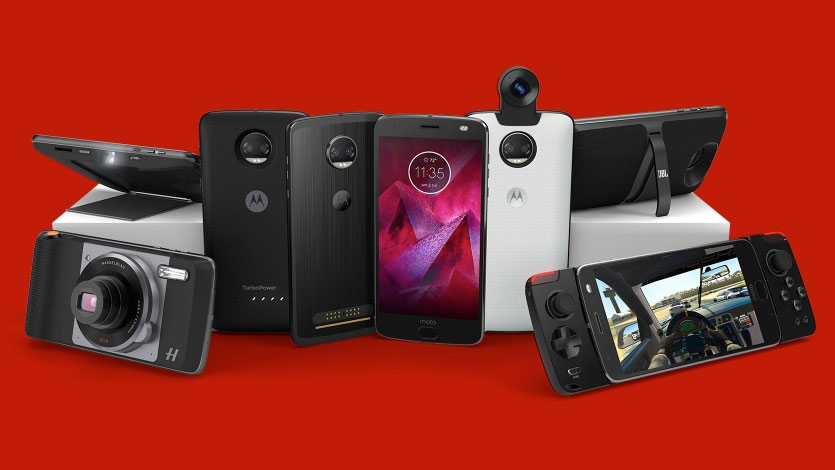Moto Z turned the modular smartphone from pipe dream to a reality

In short time, Motorola has turned the modular smartphone from pipe dream into reality. And not just any reality, but a successful one at that.
This success comes after a few public trials of modularity that, well, didn’t pan out so well… or at all. LG immediately comes to mind with its LG G5’ Friends line of hard to find, awkwardly engineered accessories that require users to power down the phone to swap one out. And who can forget Google’s troubled, but promising Project Ara concept that never came to fruition?
There was no shortage of buzz around modularity in the world of smartphones before the Moto Z, but almost nothing to show for it. But with its Moto Mods program, Motorola has grown from modularity student thanks to its early work on Ara to essentially teaching the workshop in how such an ambitious idea can succeed in the mobile space.
Moto obviously wasn’t the first to leap onto the buzz around modular smartphones. But compared to the others, its first attempt was remarkably solid in that it didn’t require the high levels of sacrifice that the others did.
There’s no risk of accidentally shutting off your phone, virtually no learning curve and no if’s or but’s about compatibility. Moto Mods are plug-and-play at its finest. They just work.

The MotoMod difference
Many, including myself, were convinced that every aspect of a smartphone had to be swappable to truly be considered modular. But Moto met expectations halfway with the Moto Z, making the core guts of the phone internal while allowing for more functions through an magnetic port. Instead of putting its focus on the gimmick, so to speak, Motorola let the growing variety of Moto Mods speak to the strength that stems from choosing to seal up the device.
These mods aren’t just convenient and clever, people really seem to have taken to them. At the launch of the new Moto Z2 Force, Motorola vice president of North America Rudi Kalil, he shared that user satisfaction is between 80-90% for Moto Mods, whereas general satisfaction with accessories is usually much lower. Impressive that the user satisfaction is so high, especially given the high cost of some Moto Mods.
Sign up for breaking news, reviews, opinion, top tech deals, and more.
Not just that, consumers are actually using the Mods they buy to fill specific needs on a regular basis. Looking at usage data, Jim Thiede, a product manager at Motorola, told us that people who buy the JBL SoundBoost Mod are using it for 8-10 hours per week on average. The Insta Share pico projector mod and Hasselblad True Zoom mods get about 5-6 hours of use weekly.
The real kicker Moto has discovered: people who tend to buy one Moto Mod usually follow through with buying another.

Honor thy customer
The ease with which one can connect a Moto Mod to a Moto Z phone is a big part of the appeal. So is the added feature that comes from using one. But perhaps the most persuasive aspect to buying into Moto’s modular lineup is that it comes with the comfort of knowing that each and every one of these investments works with its Z phones from the past, present and future.
The worst part of buying a new phone is loading it up with pricey accessories, but Moto Mods eliminates that process entirely. This is good, as Moto’s new Moto Z2 Force and Moto Z2 Play each offer a few noteworthy improvements that might make upgrading something that you’ll want to consider. Things like a hearty boost in power and a slim, streamlined design are small, but noticeable changes that might make all the difference for some.
It’s not just Moto in the ring
While I’m not saying that Motorola has found the future of smartphones with its Moto Mods program, there’s definitely something exciting about offering consumers customization that other brands are taking note of.

You’ve likely heard about Android co-creator Andy Rubin’s Essential Phone, the latest flagship to join the ranks. It, too, can expand its abilities with optional accessories.
It’s obvious that the potential of modularity planted its seed in many minds some time ago and it’s awesome to see how companies, even big ones, have tried to crack the egg. Some have failed and honestly, it’s difficult to tell how “successful” Moto’s success story really is.
But from my chair, things are looking good. So good that down the line, it wouldn’t surprise me to find even more competitors adding an element of modularity to their products.
And unless one has figured out how to successfully hot-swap components without diminishing the user experience, Moto has likely landed on the de facto method for smartphone modularity for the foreseeable future.

Cameron is a writer at The Verge, focused on reviews, deals coverage, and news. He wrote for magazines and websites such as The Verge, TechRadar, Practical Photoshop, Polygon, Eater and Al Bawaba.